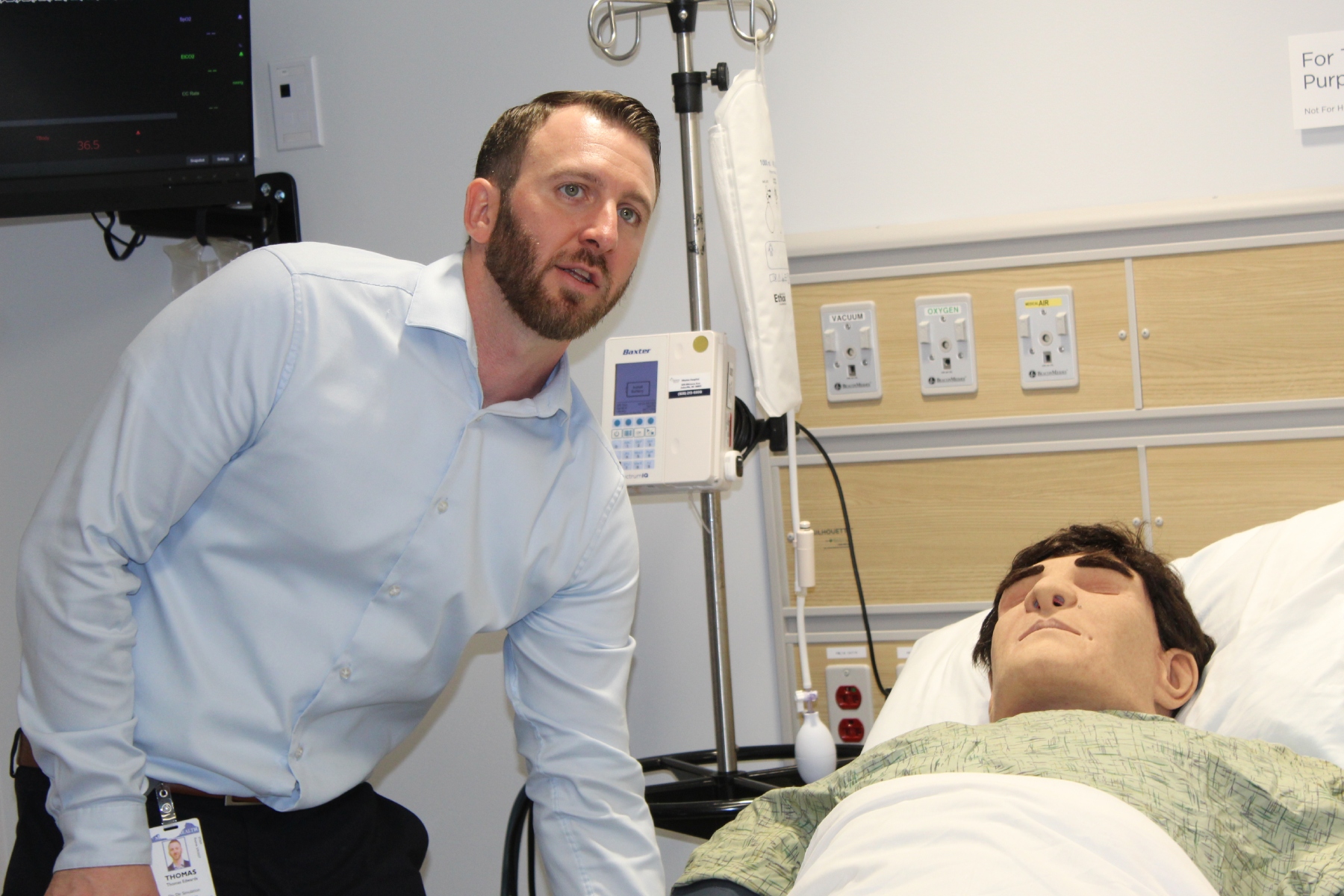ASHEVILLE, N.C. (828newsNOW) — Inside a state-of-the-art lab on Mission Hospital’s campus, a lifelike mannequin named Luna blinks, breathes and even goes into cardiac arrest — all on command.
She’s one of dozens of high-tech simulators inside the newly opened HCA Healthcare Center for Clinical Advancement, a $5 million facility that will transform hands-on training for nurses and healthcare professionals across Western North Carolina.
The 14,000-square-foot training hub officially opened Tuesday with a ribbon-cutting ceremony that drew HCA executives, community leaders and representatives from regional nursing schools. The center features immersive simulation rooms, high-fidelity mannequins and connected classrooms that allow real-time instruction across HCA’s North Carolina network.
“This space is really about creating a safe learning environment where people can make mistakes, ask questions and build confidence before they ever touch a patient,” said Thomas Edwards, Mission Health’s Division Director of Simulation and Technology. “We want them to walk onto the floor ready to take care of patients safely and effectively.”
A hands-on lab for every stage of care
The center’s clinical skills lab is filled with rows of lifelike mannequins and task trainers, representing patients from infants to older adults. Each station is designed to help nurses and clinicians practice real-world procedures — from inserting IVs and chest tubes to managing traumatic injuries.
“We have simulators in here from pediatric all the way up to geriatric,” Edwards said. “The purpose of this room is to practice hands-on clinical skills. You’ll see IV arms for starting lines, tourniquets to stop bleeding, even central line access and tracheostomy care.”
In one corner, a mannequin arm gushes synthetic blood until a student applies a tourniquet. Nearby, a torso model allows trainees to practice dressing chest tubes and performing suctioning procedures.
“These are skills trainers,” Edwards explained. “They let our nurses and students repeat these critical tasks over and over until they can do them with confidence.”
From birth to the emergency room — simulated reality
Down the hall, “Lucina,” a maternal simulator, lies in a labor and delivery suite. Controlled by an operator behind a two-way mirror, Lucina can cry out in pain, experience complications and even give birth to a baby mannequin — complete with vital signs, a placenta and the ability to simulate postpartum hemorrhage.
“She’ll have contractions, she’ll turn her head and she’ll actually give birth,” Edwards said. “We can even simulate high-risk deliveries like breech births or postpartum bleeding. It’s about preparing for those rare but critical situations.”
In another simulation room, a mannequin breathes, blinks and reacts to CPR. His pulse can be measured. His oxygen levels rise and fall. He can go into cardiac arrest on cue.
“This is where we run our emergency and critical-care simulations,” Edwards said. “They’re as realistic as we can make them — chest rise and fall, real suction and oxygen, even the ability to run blood transfusions during trauma scenarios.”
Learning through reflection
Each scenario is filmed and followed by a debriefing session, where trainees gather to review video of their performance.
“After every simulation, they sit down as a group and watch themselves,” Edwards said. “They see what went right, what went wrong and what they can do better next time.”
The process mirrors real hospital teamwork, complete with recorders, medication handlers and code leaders — simulating the pace, communication and decision-making of real emergencies.
Connected classrooms and mobile learning
The center is wired for live, interactive learning across HCA’s network. Each classroom features tracking cameras and conferencing technology, allowing instructors in Asheville to teach nurses in other North Carolina hospitals — or even in HCA’s centers in Texas and Tennessee.
“That means our nurses don’t all have to drive to Asheville,” Edwards said. “We can teach virtually and in-person at the same time. It really brings that integration to life.”
Outside the hospital, a mobile simulation lab extends training opportunities across Western North Carolina, providing rural hospitals access to the same high-tech learning environment.
Investing in the future of care
HCA Healthcare leaders said the center is one of 18 simulation labs the company operates nationwide, with six more planned for 2026. The Asheville facility marks a milestone for Mission Health and a major investment in regional health care training.
“This project represents years of vision and collaboration,” said Laurie Zone-Smith, Division Vice President for Clinical Education at HCA Healthcare’s North Carolina Division. “It reflects our commitment to the care and improvement of human life — and to preparing the next generation of caregivers.”
Edwards said the impact will reach far beyond Mission Hospital’s walls.
“When our nurses train here, they’re not just learning procedures,” he said. “They’re learning how to think, communicate and act under pressure. And that means safer care for every patient in Western North Carolina.”



















